‘June gloom’ is anything but doom on L.A. hiking trails
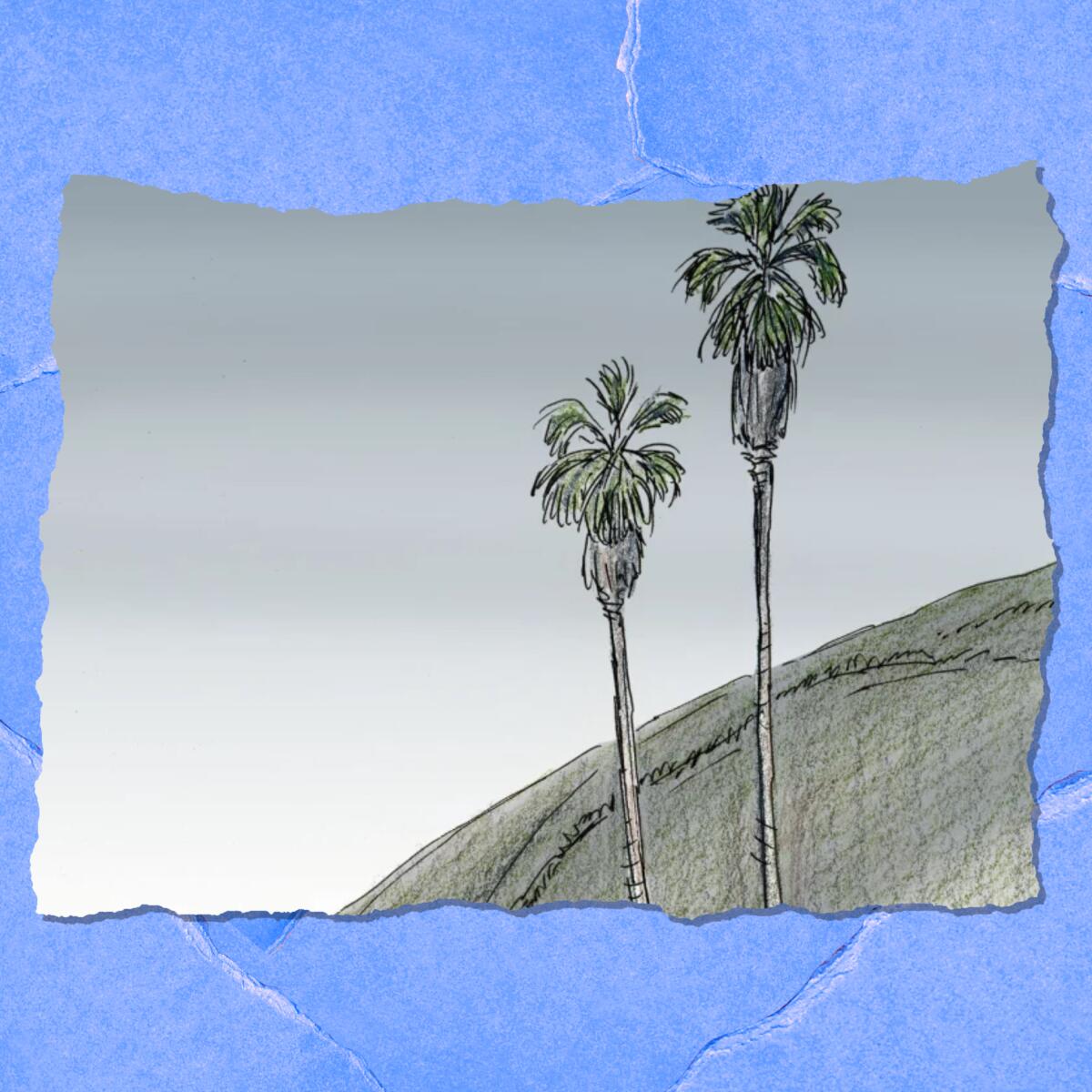
- Share via
June gloom may not be great for beach days. No matter.
Overcast mornings are a great time to experience Santa Monica Mountain trails without the scorching summer sun. Drizzly coastal mornings bring wildflowers (yep, they’re out right now) and cooler temperatures, perfect conditions for hard uphill hauls unthinkable in July or August heat. One last thing: Don’t forget to use sunscreen; you still need protection even though it’s not sunny. Try these Santa Monica Mountain routes to get the most out of June gloom.
Easy: Take a walk through grasslands where Chumash people lived in ancient times. The Satwiwa Loop Trail (Satwiwa was the name of a Chumash village) in Point Mugu State Park passes by a culture center and re-created Chumash dwelling made from tule and willow branches. The route spins out to an old windmill, where you turn to complete the loop. Look up to see the ragged profile of Boney Mountain in the distance on the two-mile, flat hike, which starts at the state park’s entrance at Via Goleta and Lynn Road in Newbury Park. Free parking and entry.
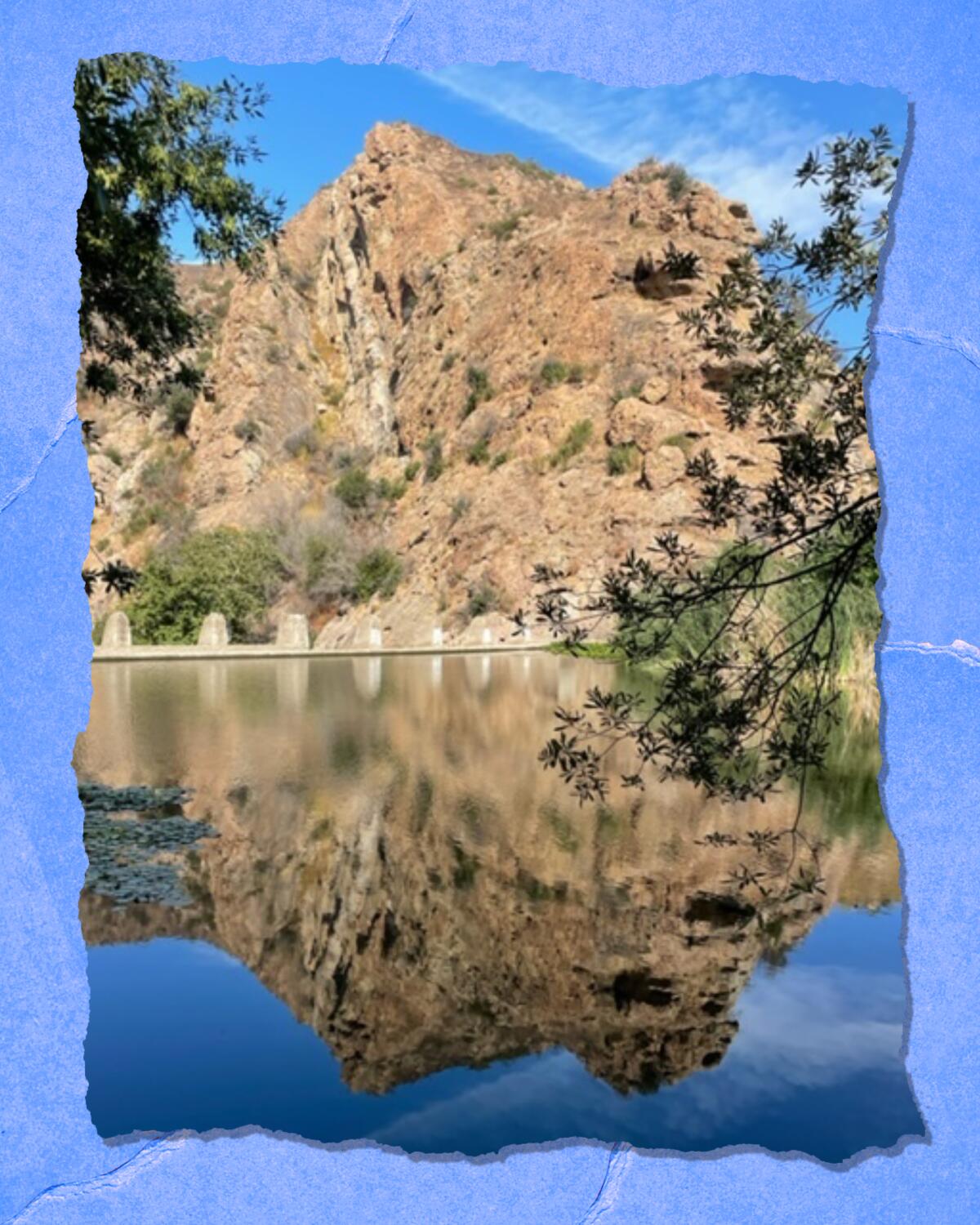
Easy: I’ve written about Century Lake in the past, and it’s a destination worth repeated visits. The trail in Malibu Creek State Park takes you past blooming wildflowers and rocky crags to the convincing (but fake) lake created as a hunting pond in 1903. Nowadays it’s a lovely, chill spot where you can picnic, swim or just enjoy views of rocks reflected in the water. Park at Malibu Creek State Park (1925 Las Virgenes Road, Calabasas; $12 for all-day parking) and hike on the main Crags Road Trail about a mile and a half. It starts out flat, then climbs a gentle hill until you reach a side trail to the lake. It’s that simple.
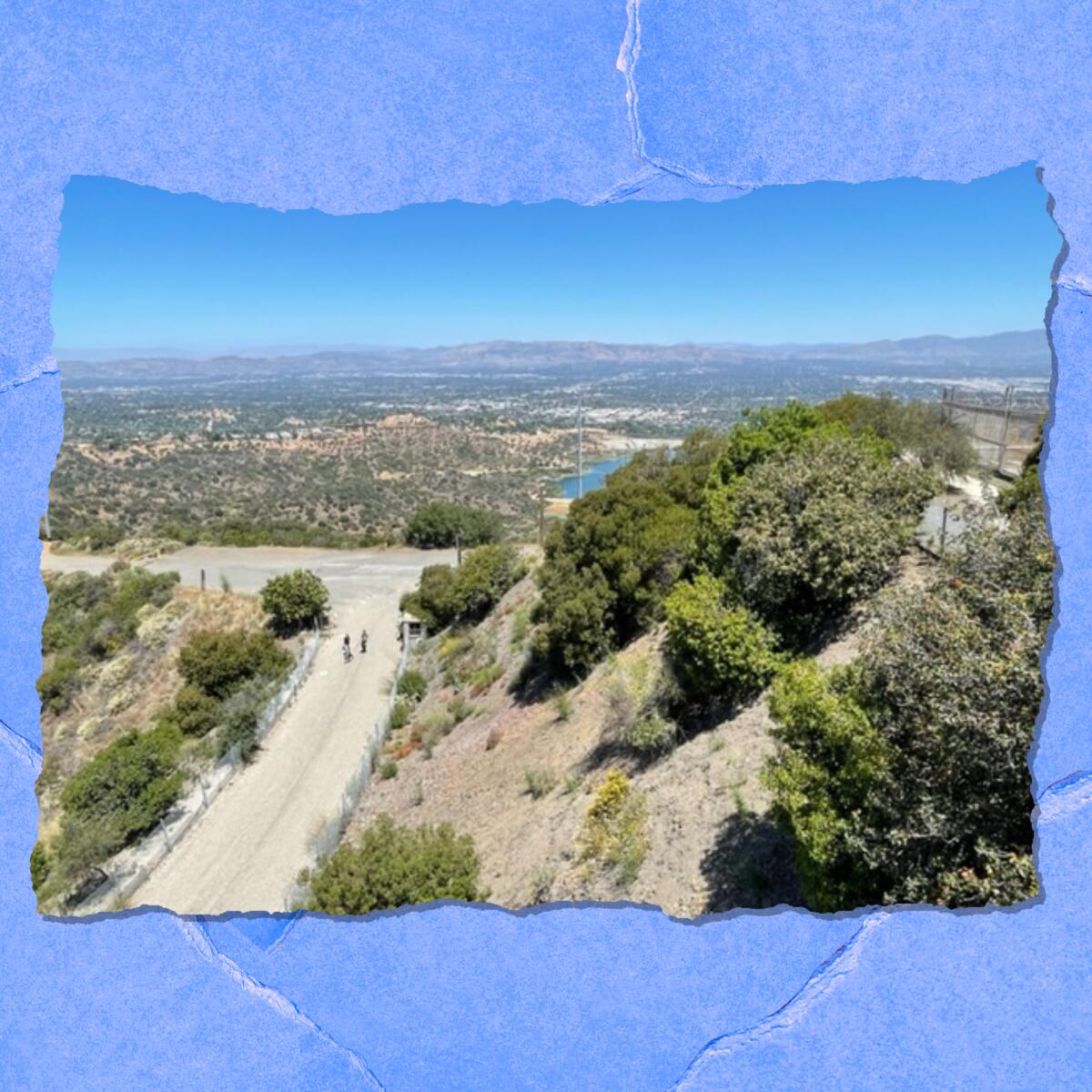
Moderate: An old missile control site hardly sounds like a compelling hiking destination. San Vicente Mountain is an exception. The remaining tower (technically the onetime Nike Missile Control Site LA-96C) at almost 2,000 feet above sea level offers panoramic views from Encino Reservoir to mountain neighborhoods in West L.A. You’ll see monkey flowers, buckwheat and deerweed blooming now alongside the road. In the 1950s and ’60s, the site was designed to detect potential Russian missiles heading to Los Angeles. Today hikers, runners and mountain bicyclists tackle the 7.5-mile round-trip route (less than 1,000 feet of gain). Check out the views of downtown L.A. near the beginning of the hike (here’s a good trail guide). Start at the end of Westridge Road above Brentwood.
Difficult: You’ll be thankful for sun-blocking clouds on the way to Mugu Peak. The trail begins on the westernmost side of Point Mugu State Park. The route starts straight uphill for .7 miles mark on the Chumash Trail from Pacific Coast Highway. Then stay left on the trail until you reach Mugu Peak Trail. The total mileage isn’t a lot — less than three miles — but you gain more than 1,200 feet. You can expect to see large, white yucca blooms at this time of year. Ocean views are reason enough to tackle this peak. You’ll find the trailhead on Pacific Coast Highway at .3 miles past Mugu Beach.
3 things to do this week
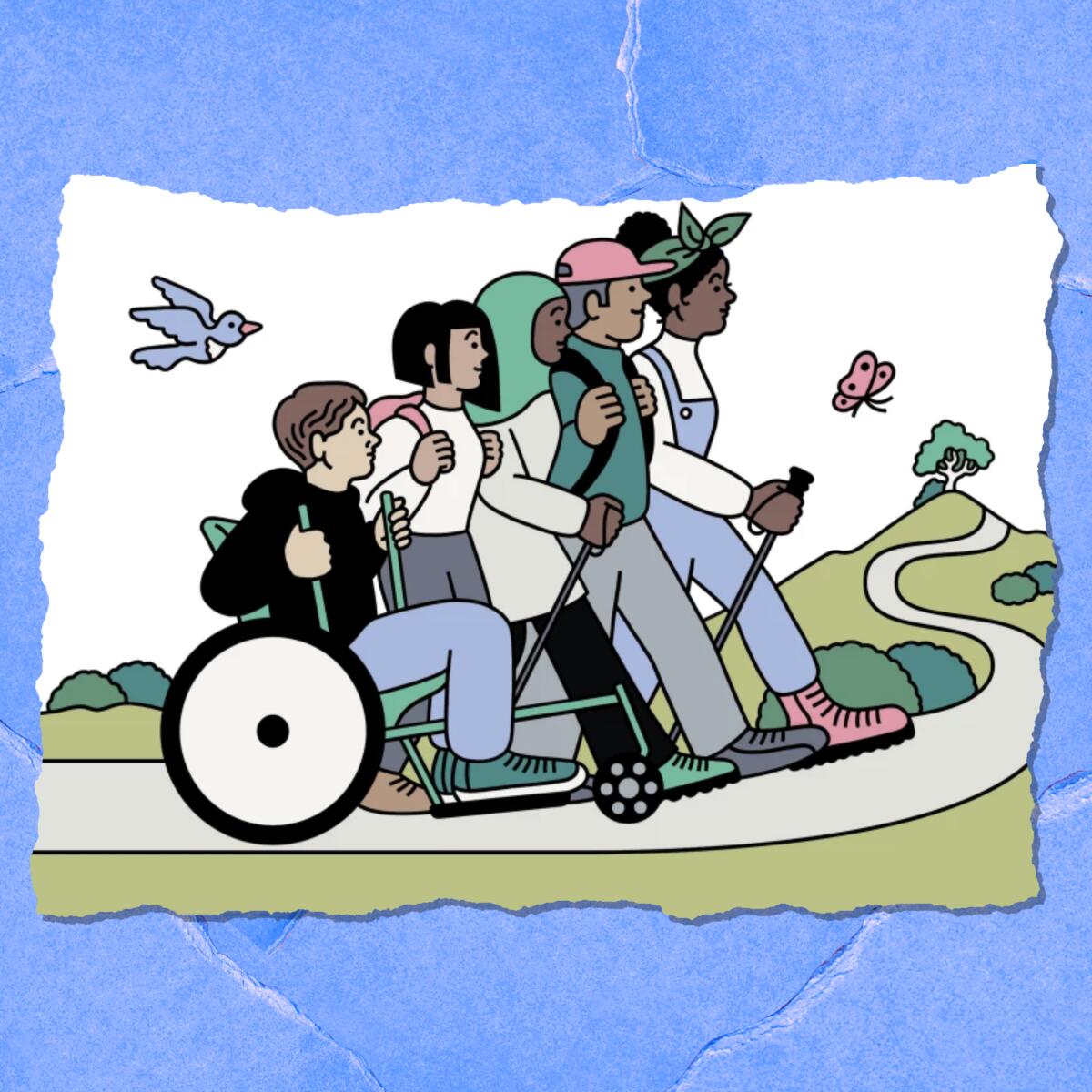
1. Get outside for the 30th National Trails Day on Saturday. I like the way the American Hiking Society describes National Trails Day as “a day of service for hometown trails and the people who love them.” It’s a not-so-subtle pitch to urge trail users to get out and volunteer, and the event is always held the first Saturday in June. Locally, you can attend trail cleanups at the Echo Mountain trailhead in Altadena, Sepulveda Basin in Van Nuys (part of the Great L.A. River CleanUp) and North Shore Drive at Big Bear Lake and elsewhere. Also, L.A. County Parks will take people on a hike in the Puente Hills to show them the lands that are set to become a new regional park. Out Here OC is hosting a free hike for queer BIPOC folks to Black Star Canyon in Silverado (with free transportation from downtown Santa Ana). Check out the full list of events at the American Hiking Society’s website.
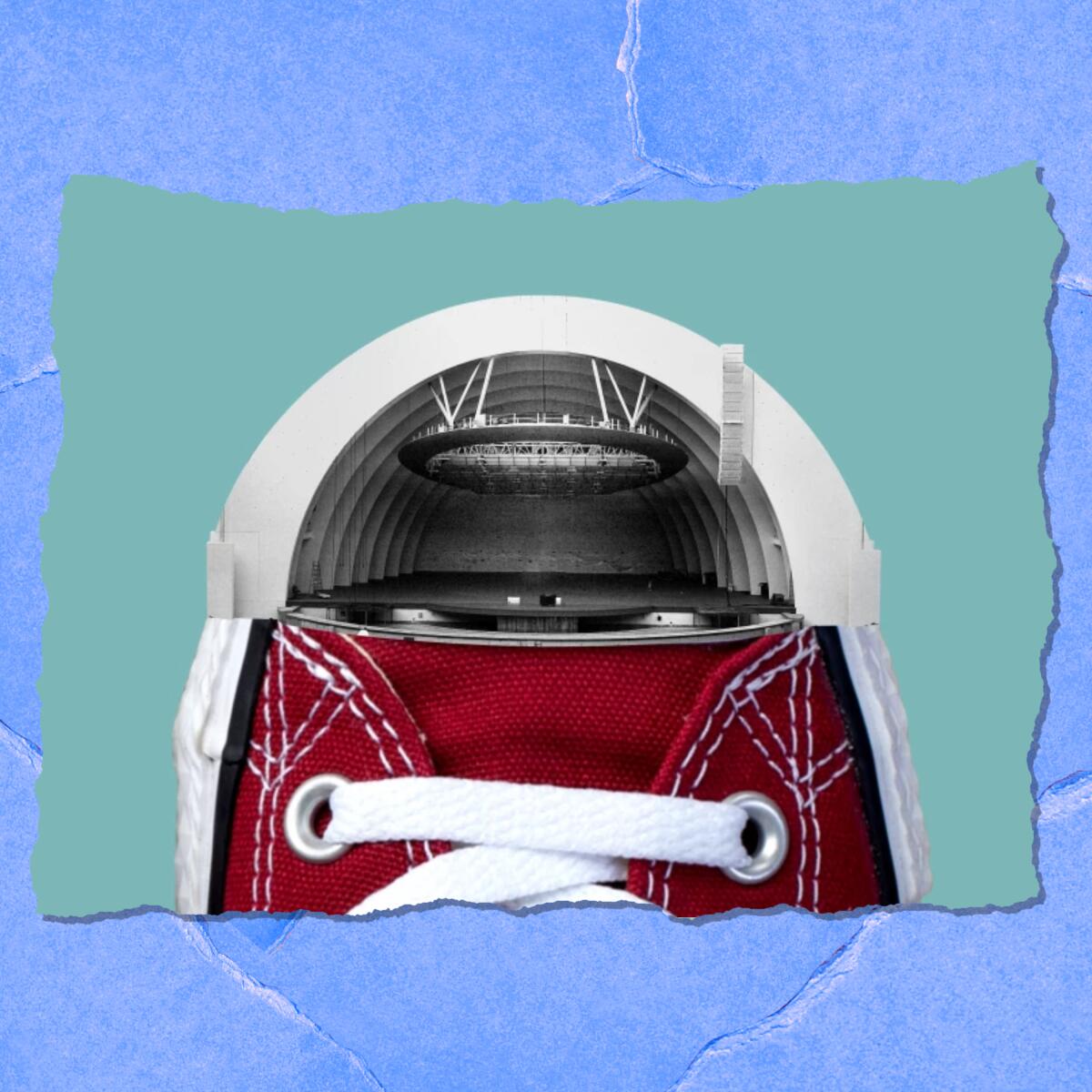
2. Ever heard of Daisy Dell? Here’s a walking guide to the epic Hollywood landmark. Of course you know where Daisy Dell is. It’s the natural amphitheater now known as the Hollywood Bowl. The Bowl in the Hollywood Hills turns 100 this year. “On March 27, 1921, the outdoor venue hosted its first Los Angeles Philharmonic performance, an Easter sunrise service attended by more than 800 concertgoers,” according to a KCET story. “The following year, the Philharmonic played its first official summer season in the Hollywood Bowl.” This walking guide offers eight things you should not miss on your next visit. One must-see: the sole remaining pepper tree that was part of a row of trees that once lined the entrance to the amphitheater.

3. Why you can (and should) plant Matilija poppies in your garden. If you haven’t seen Matilija poppies in bloom, start looking around. I’m seeing them wherever I go lately. I found them in a small native plant garden at Deane Dana Friendship Natural Area in San Pedro and along a footpath near the Autry Museum in Griffith Park. They’re super tall, and the bloom looks like something you would make from crepe paper: delicate white wrinkly petals around a big yellow pompom. They’re also known as the “fried-egg plant.” It’s a quick-growing native that can reach 6 feet in height and looks elegant just about anywhere. Here are 20 native plants that can take the heat (and the drought) in your summer garden.
Wild things
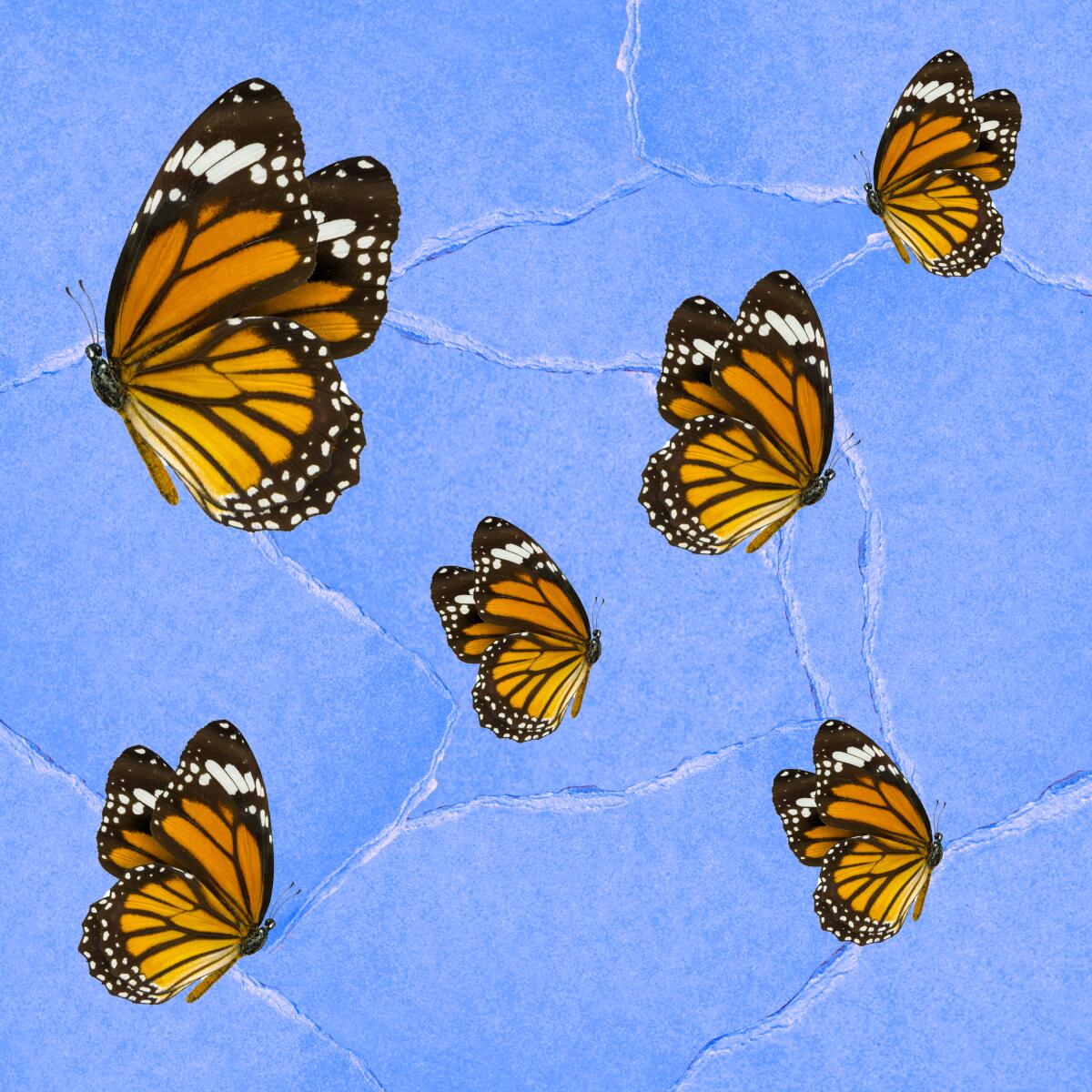
Here’s more proof that monarch butterflies have made a bit of a comeback. In October, I reported that monarchs were turning up early during the California coastal migration. Biologists at the time observed numbers that gave them hope — and turned out to be real. “The Xerces Society for Invertebrate Conservation announced in late January that community scientists had reported 247,000 overwintering butterflies in the 2021 Western Monarch Thanksgiving Count,” according to this L.A. Times story. “There were fewer than 2,000 the year before.” Now Mexican experts report that “35% more monarch butterflies arrived this year to spend the winter in the country’s mountaintop forests, compared with the previous season,” according to this story.
The must-read
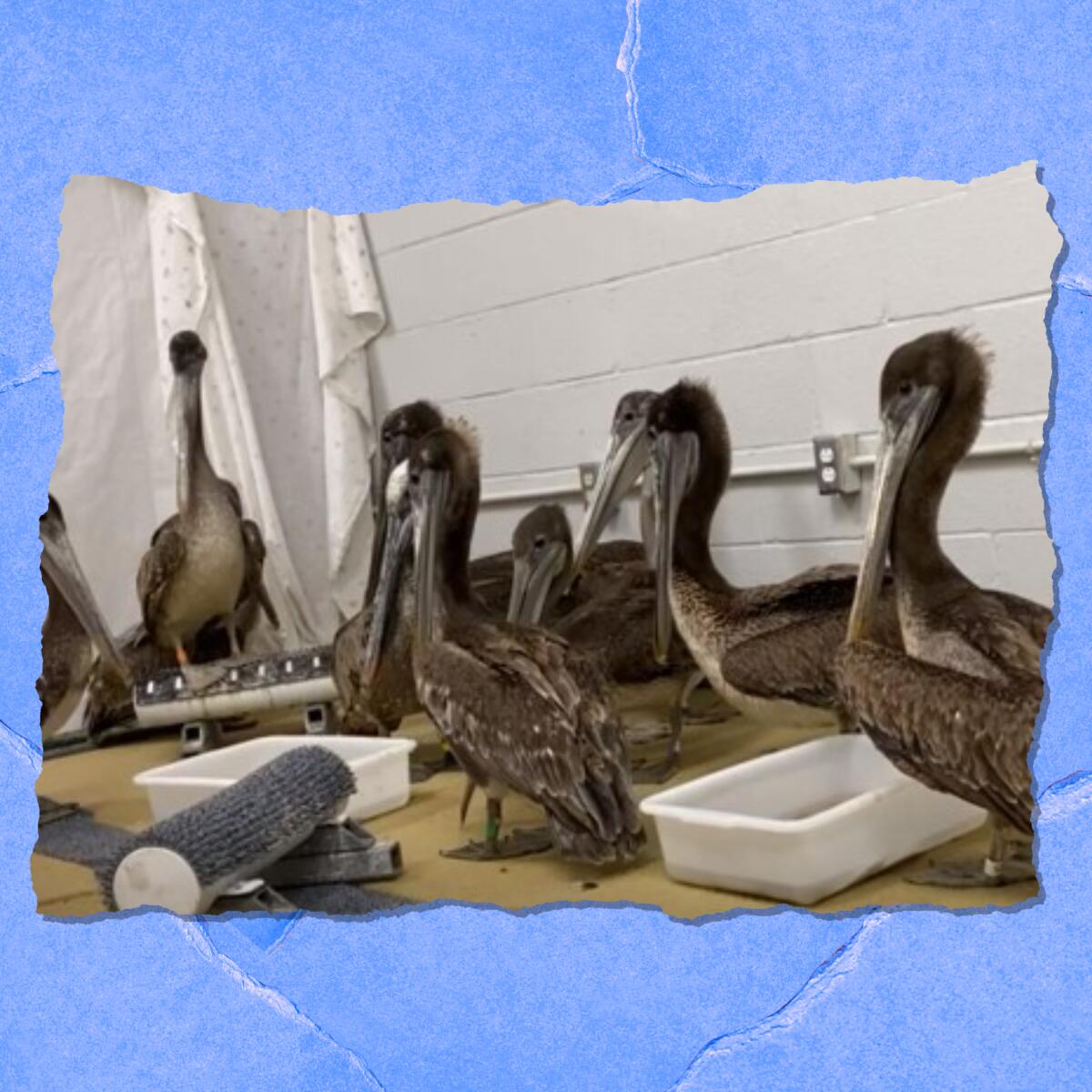
In case you missed it, May was a troubling month for California brown pelicans. State officials have been baffled by the number of sick and dying birds that have turned up at nonprofit rescue centers as far north as Santa Barbara and as far south as San Diego. “This is the seabird in the ocean bringing a message that things are not quite right,” International Bird Rescue Chief Executive JD Bergeron said in an L.A. Times story. State officials will perform tests on the birds to find out the cause of the problem. By the way, the California pelican is a subspecies of brown pelicans that ranges from British Columbia, Canada, to Nayarit, Mexico.
P.S
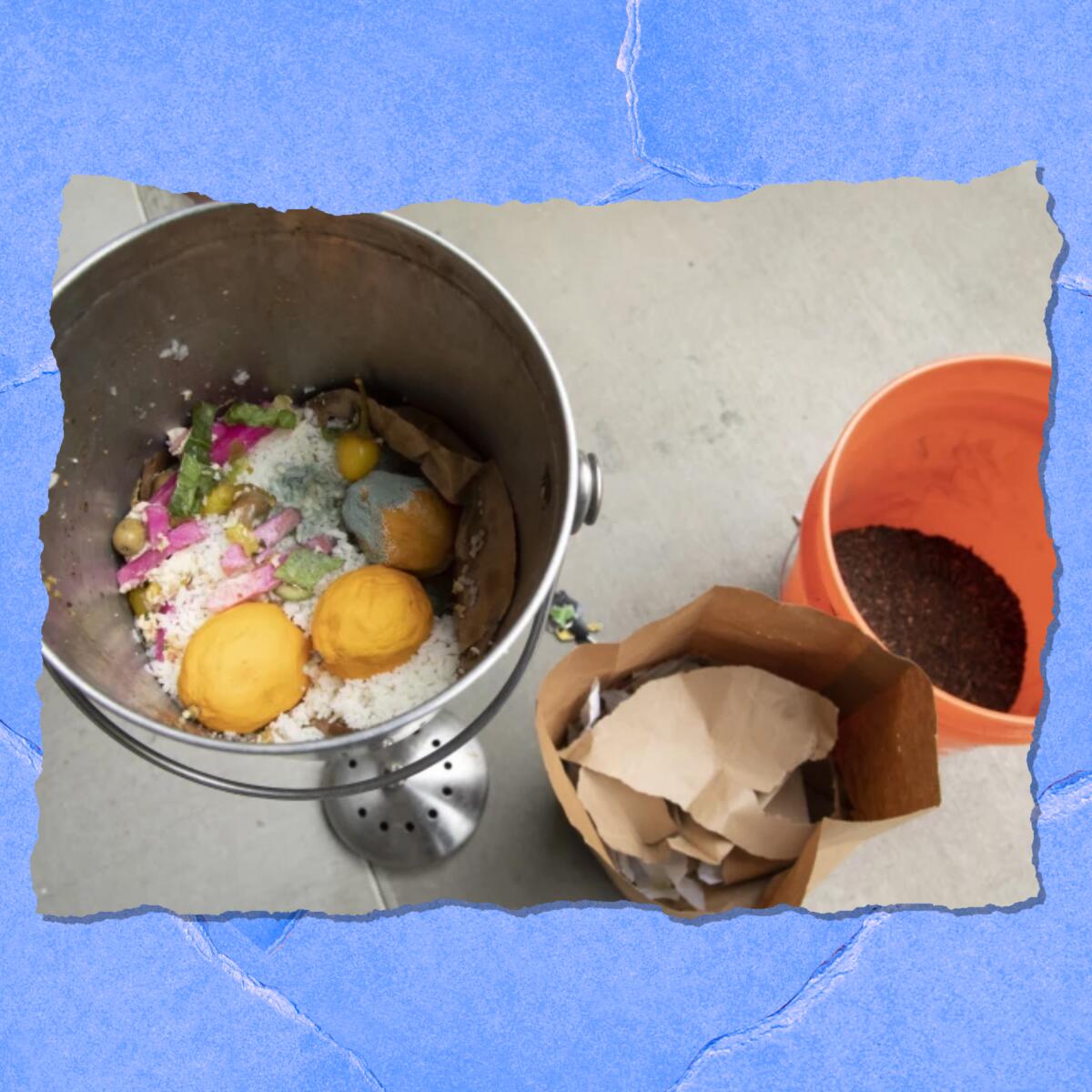
Here’s the fine print on California’s new composting law that went into effect this year: L.A. isn’t quite ready to handle food scraps in your green bin. The city’s Bureau of Sanitation is running a pilot program that allows certain households to “throw all of their food waste — coffee grounds, coffee filters and non-nylon tea bags; fruit and vegetable scraps (even the moldy parts); eggshells; used and dirty paper food containers and plates; juice pulp; paper towels and tissues — into their green bins for regular pickup,” according to an L.A. Times story. But if you aren’t in the program, you’ll have to wait a little longer (or compost on your own). The city started with 40,000 households and plans to expand to 750,000 by Jan. 1.

Glenn Kaino has created his own kind of forest — and it’s indoors. L.A. Times writer Deborah Vankin toured the immersive art show in a Boyle Heights warehouse that takes visitors through 87 reimagined redwood trees and wrote: “Most are tree remnants ethically sourced from a Northern California forest and repositioned inside the space, while others are cast replicas. The forest also includes handmade sculptures, animatronic robots, original music and glimmering installations that alternately employ mirrors, light, water and shadows to create a range of visual trickery.” The show, “A Forest for the Trees,” melds stories with environmental practices and continues through summer. Ticket info here.
Enjoying this newsletter? Consider subscribing to the Los Angeles Times
Your support helps us deliver the news that matters most. Become a subscriber.
Send us your thoughts
Share anything that’s on your mind. The Wild is written for you and delivered to your inbox for free. Drop us a line at [email protected].
Click to view the web version of this newsletter and share it with others, and sign up to have it sent weekly to your inbox. I’m Mary Forgione, and I write The Wild. I’ve been exploring trails and open spaces in Southern California for four decades.

Sign up for The Wild
We’ll help you find the best places to hike, bike and run, as well as the perfect silent spots for meditation and yoga.
You may occasionally receive promotional content from the Los Angeles Times.




